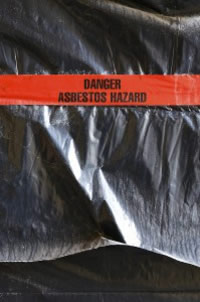Illinois Supreme Court Upholds the Exclusive Remedy Provisions of the Workers’ Compensation Act and the Workers’ Occupational Diseases Act in Asbestos Related Diseases
On November 4, 2015, the Illinois Supreme Court filed the attached opinion in the matter of Folta v. Ferro Engineering, 2015 L 118070. In a 4-2 decision, the Court held that when the employee’s injury or disease first manifests after the expiration of certain time limitations under the Workers’ Compensation Act (820 ILCS 305/1 et seq. (West 2010)) and the Workers’ Occupational Diseases Act (820 ILCS 310/1 et seq. (West 2010)), the employee’s action is barred by the exclusive remedy provisions of those acts.
Background
Mr. Folta worked for Ferro Engineering from 1966 to 1970, alleging exposure to products containing asbestos during that time period. Forty-one years later, Mr. Folta was diagnosed with mesothelioma. He filed a civil action in Cook County, Illinois against 15, including Ferro. In responses Ferro filed a Motion to Dismiss based on the exclusive remedy provision in the Workers’ Compensation Act and the Workers’ Occupational Diseases Act (Acts). Plaintiff alleged his action fell outside the exclusive remedy provision because his claim was not “compensable” under the Acts because his symptoms manifested more than 40 years after his last exposure to asbestos and any potential asbestos-related compensation claim was barred under the 25-year limitation provision in section 6(c) of the Workers’ Occupational Diseases Act.
The circuit court granted Ferro Engineering’s motion to dismiss, holding that the action was barred by the exclusive remedy provisions. Following resolution of the civil action with the 14 other defendants, Folta appealed the dismissal of the claims against Ferro. The appellate court reversed and remanded. Folta v. Ferro Engineering, 2014 IL App (1st) 123219. Relying on the Illinois Supreme Court’s court’s ruling inMeerbrey v. Marshall Field & Co., 139 Ill. 2d 455 (1990), the appellate court explained that an injured employee may bring a common-law action against his employer where “the injury is not compensable under the Act.” Folta v. Ferro Engineering, 2014 IL App (1st) 123219, ¶ 27. The appellate court determined that the term “compensability” must relate to the “ability to recover under the Act.” Id. ¶ 31. It found that Folta’s injury was “quite literally not compensable” under the Workers’ Compensation Act because all possibility of recovery was foreclosed due to the nature of his injury and the fact that his disease did not manifest until after the statute of repose expired. Id. ¶ 36. Accordingly, the appellate court held that Folta’s suit against Ferro Engineering was not barred by the exclusivity provisions of the Workers’ Compensation Act and the Workers’ Occupational Diseases Act, and remanded for further proceedings. Id. ¶ 44.
Of note, the Illinois Supreme Court allowed several amici curiae briefs in support of both parties. In support of Folta, the Court allowed briefs from the Illinois Trial Lawyers Association, the Asbestos Disease Awareness Organization, and the Illinois AFL-CIO. In support of Ferro Engineering, we allowed a joint brief from various businesses, including Caterpillar Inc., Aurora Pump Company, Innophos, Inc., Rockwell Automation, Inc., United States Steel Corporation, F.H. Leinweber Company, Inc., Driv-Lok, Inc., Ford Motor Company, and ExxonMobil Oil Corporation, as well as briefs from the Illinois Self-Insurers’ Association, the Illinois Defense Trial Counsel, and a joint brief from the American Insurance Association, Property Casualty Insurers Association of America, and the Travelers Indemnity Company.
Analysis
The Court provided an analysis of the exclusive remedy provisions of the Workers’ Compensation Act and the Workers’ Occupational Diseases Act, in order to determine if these provisions bar an employee’s cause of action against an employer to recover damages for a disease resulting from asbestos exposure which arose out of and in the course of employment even though no compensation is available under those acts due to statutory time limits on the employer’s liability.
After a brief overview of the Acts, the Court noted both acts contain an exclusive remedy provision as part of the quid pro quo which balances the sacrifices and gains of employees and employers. Meerbrey, 139 Ill. 2d at 462. In discussing the scope of the exclusivity provisions under the Workers’ Compensation Act, the Court has indicated that the Act generally provides the exclusive means by which an employee can recover against an employer for a work related injury. Id at 462. However, an employee can escape the exclusivity provisions of the Act if the employee establishes that the injury (1) was not accidental; (2) did not arise from his employment; (3) was not received during the course of employment; or (4) was not compensable under the Act. Id. (citing Collier v. Wagner Castings Co., 81 Ill. 2d 229, 237 (1980)).
In this case, Folta relied on the fourth category, that his injury was not compensable under the act because he never had an opportunity to recover any benefits under the Act. On the other hand, Ferro’s position was that whether an injury is compensable is defined by the scope of the Act’s coverage, and not on the particular employee’s ability to recover benefits.
The Court then reviewed the Illinois Supreme Court’s historical analysis of a “compensable injury”. The Court concluded that Pathfinder Co. v. Industrial Comm’n, 62 Ill. 2d 556 (1976), Collier and Meerbrey stand for the proposition that whether an injury is compensable is related to whether the type of injury categorically fits within the purview of the Act, not whether an injury is compensable by whether there is an ability to recover benefits for a particular injury sustained by an employee. In all of these cases, the exclusivity provisions barred a common-law cause of action.
The majority notes that the Act specifically addresses diseases caused by asbestos exposure, citing several causes where employees and spouses had received compensation, which indicates the legislature intended that occupational diseases arising from workplace asbestos exposure are the type of injury contemplated to be within the scope of the Act. Accordingly, under Pathfinder, Collier and Meerbrey, Foltas injury is the type of injury compensable under the Act.
The Court went on to discuss the cases of Moushon v. National Garages, Inc., 9 Ill. 2d 407 (1956), andDuley v. Caterpillar Tractor Co., 44 Ill. 2d 15 (1969), which dealt with the Acts provisions that limit employer’s liability and the exclusive remedy provisions. Based upon their review of these cases, the Court stated that this court has held that despite limitations on the amount and type of recovery under the Act, the Act is the employee’s exclusive remedy for workplace injuries.
The Court stated that section 6(c) of the Workers’ Occupational Diseases Act barred Folta’s right to file an application for compensation. Based on the plain language of this section, the Court stated this provision acts as a statute of repose, and creates an absolute bar on the right to bring a claim. The Court noted that in enacting this section of the Act, the legislature intended to provide an absolute definitive time period within which all occupational disease claims arising from asbestos exposure must be brought, even if it bars a claim before it has even accrued. Allowing a common law action in spite of the exclusive remedy provisions, would render the statute of repose useless. Further, this interpretation would directly contradict the plain language of the exclusive remedy provision which provides that the employer’s liability is “exclusive and in place of any and all other civil liability whatsoever, at common law or otherwise.” 820 ILCS 310/11 (West 2010).
Folta further alleged that since decedent was precluded from recovering any compensation benefits offered by the statute, the effect was to essentially exclude this latent disease from coverage under the Act. Thus, relying on the Pennsylvania Supreme Court case of Tooey v. AK Steel Corp., 81 A.3d 851 (Pa. 2013), Folta asserts that her recourse against the employer must be found in the common law. The Tooey court defined “injury” to include “occupational disease” provided that, if occupational disease was the basis for compensation, that Act only applied to disability or death resulting from such disease and occurring within a 300-week time window. The court held, over a dissent, that this time limitation “operate[d] as a de facto exclusion of coverage under the Act for essentially all mesothelioma claims.” Id. at 863. Therefore, common law mesothelioma claims were not barred by the exclusive remedy provision of the Pennsylvania Act. Id. at 865.
The Illinois Supreme Court rejected this argument, based on the plaint language of the statute, which state that there is no right to recover damages from the employer for “any injury to health, disease, or death therefrom, other than for the compensation herein provided”, and that the Act is exclusive with respect to “any disease contracted or sustained in the course of the employment”, it would be “a radical departure to suggest that the exclusivity provisions apply only for certain occupational diseases in which the disability manifests within the time limitation.” “Consistent with Collier and Meerbrey, the litmus test is not whether there is an ability to recover benefits.” Folta v. Ferro Engineering, 2015 IL 118070, ¶ 42. “Nothing in our statute or the history of our jurisprudence suggests that a temporal limitation removes a work-related injury from the purview of the Act.” Id. The Court acknowledges the possible harsh results, but indicates the question of whether a different balance be struck should be addressed by the legislature, rather than the Court.
Finally, Folta argued that holding that the exclusive remedy provisions bar her cause of action would violate the Illinois Constitution’s guarantees of equal protection (Ill. Const. 1970, art. I, § 2), prohibition against special legislation (Ill. Const. 1970, art. IV, § 13), and the right to a certain remedy (Ill. Const. 1970, art. I, § 12). Folta contends that interpreting the exclusive remedy provisions to deprive the family of a right to recovery against the employer would arbitrarily create two classes of similarly situated injured workers who are treated unequally and without any rational basis. Folta argued that those workers who suffer from occupational diseases with short latency periods are eligible to receive compensation benefits, while those workers who suffer from occupational diseases with long latency periods are “categorically” prohibited from a right to recover compensation benefits and are additionally prohibited from seeking common-law damages. Folta v. Ferro Engineering, 2015 IL 118070, ¶ 46.
The Court found no merit with Folta’s arguments indicating that “all of these workers are precluded from seeking common law damages.” Id. at ¶ 47. The Court further noted that there are examples where the particular facts and circumstances are such that they do not allow for recovery of benefits against the employer. But there is no “categorical” class without a right to seek benefits against their employer. Further, “the acts do not prevent an employee from seeking a remedy against other third parties for an injury or disease.” Id. at ¶ 50. “Rather, in this case, the acts restrict the class of potential defendants from whom Folta could seek a remedy, limiting Folta’s recourse for wrongful death claims to third parties other than the employer.” Id. “In this case, Folta named 14 defendant manufacturers of asbestos related products. Folta was not left without any remedy.“ Id.
Conclusion
The Illinois Supreme Court concluded Folta’s action against Ferro Engineering for wrongful death is barred by the exclusive remedy provisions of the Workers’ Compensation Act and the Workers’ Occupational Diseases Act.
Dissent
In his dissent, Justice Freeman, joined by Justice Kilbride, indicated he would affirm the judgment of the appellate court. Justice Freeman stated that in the unanimous opinion of the appellate court, the court noted the scope of the exclusive remedy provisions is not absolute. The court pointed to Meerbrey, which listed four exceptions to the Workers’ Compensation Act’s exclusivity provisions, which were discussed above. The appellate court rejected Ferro’s argument, correctly noting that Ferro’s proposed definition of compensability “would render the fourth Meerbrey exception superfluous, since Meerbrey already contains explicit exceptions for injuries that did not arise from a worker’s employment and injuries that were not received during the course of employment.” 2014 IL App (1st) 123219, Id. ¶ 30. The court held that the fourthMeerbrey exception applied to allow plaintiff to bring a common law suit against Ferro. Id.
The appellate court held the fourth Meerbrey exception applied here because plaintiff’s injury was “quite literally not compensable under the Act, in that all possibility of recovery is foreclosed because of the nature of plaintiff’s injury.” Id. at ¶ 36. In support of this point, the dissent distinguished Moushon from the current case because in Moushon, plaintiff’s injury was within the Workers’ Compensation Act’s “coverage formula” and the plaintiff received compensation for that injury. That the plaintiff might not have been able to recover statutory compensation for a particular element said to arise from his injury does not entitle him to file a common-law action against his employer for additional damages.
Justice Freeman indicated the majority’s interpretation of the exclusive remedy provisions “includes, at most, only scant mention of the canons of statutory construction”. Folta v. Ferro Engineering, 2015 IL 118070, ¶ 66. The dissent specifically identified the rule that “in construing a statute, the court may consider the reason for the law, the problems sought to be remedied, the purposes to be achieved, and the consequences of construing the statute one way or another.” Hubble v. Bi-State Development Agency of the Illinois-Missouri Metropolitan District, 238 Ill. 2d 262, 268 (2010). Id. at ¶ 69.
The dissent relies on Professor Arthur Lawson’s treatise Larson’s Workers’ Compensation Law § 100.01(1) (2015), which states: the Workers’ Compensation Act’s exclusive remedy provision thus “is part of the quid pro quo in which the sacrifices and gains of employees and employers are to some extent put in balance, for, while the employer assumes a new liability without fault, it is relieved of the prospect of large damage verdicts.”
Justice Freeman indicated the majority’s interpretation of the exclusive remedy provisions could not be the law. The dissent indicated that when the 25 year statute of repose in section 6(c) of the Workers’Occupational Diseases Act expires there is no longer a recognized right of action, therefore, the employee’s injury is not compensable under the Act, and the employee may bring, under the fourth Meerbreyexception, a common law cause of action against the employer.
In support of this opinion, the dissent further relies on Professor Larson’s treatise, which states: “other jurisdictions, including Illinois and Pennsylvania, have refused to follow the twisted logic (emphasis added) in Kane that would (1) bar the claim because it was unknown at the time the statute of repose expired and (2) bar the civil action because of the exclusive remedy provisions of the state’s workers’ compensation law.” 9 Larson’s Workers’ Compensation Law § 100.05(3)(b)(2015). The treatise cites the appellate case at bar,Meerbrey, two other appellate court decisions, and Tooey v. AK Steel Corp., 81 A.3d 851 (Pa. 2013). TheTooey court held that claims for occupational disease which manifested outside the 300-week period prescribed by the Workers’ Compensation Act did not fall within the purview of the Workers’ Compensation Act, and, therefore, the Workers’ Compensation Act’s exclusivity provision did not preclude injured employees from filing common-law claims against their employers.
In the opinion of the dissent, the interpretation of the Act could not be intended to leave the employee with no remedy under the Act or at common law. However, the majority addressed this claim directly, stating: “the acts do not prevent an employee from seeking a remedy against other third parties for an injury or disease.”Folta v. Ferro Engineering, 2015 IL 118070, at ¶ 50. “Rather, in this case, the acts restrict the class of potential defendants from whom Folta could seek a remedy, limiting Folta’s recourse for wrongful death claims to third parties other than the employer.” Id. “In this case, Folta named 14 defendant manufacturers of asbestos related products. Folta was not left without any remedy.“ Id.
Disclaimer and Message Required by the Missouri Bar
The content of this blog is intended for informational purposes only, and is not intended to solicit business or to provide legal advice. Since the laws of different states vary, the information on this blog may not apply to every reader. You should not make, or refrain from making, any legal action based upon the information contained on this blog without first seeking professional counsel. Your use of the blog does not create an attorney-client relationship between you and Pitzer Snodgrass, PC, or the authors. The choice of a lawyer is an important decision and should not be based solely on advertising.














